Losing fat and getting lean doesn’t have to be difficult – and it certainly doesn’t have to be a mystery.
If you understand certain things about how the human body works in relation to burning fat, you can use this to your advantage and get (relatively) lean without too much difficulty.
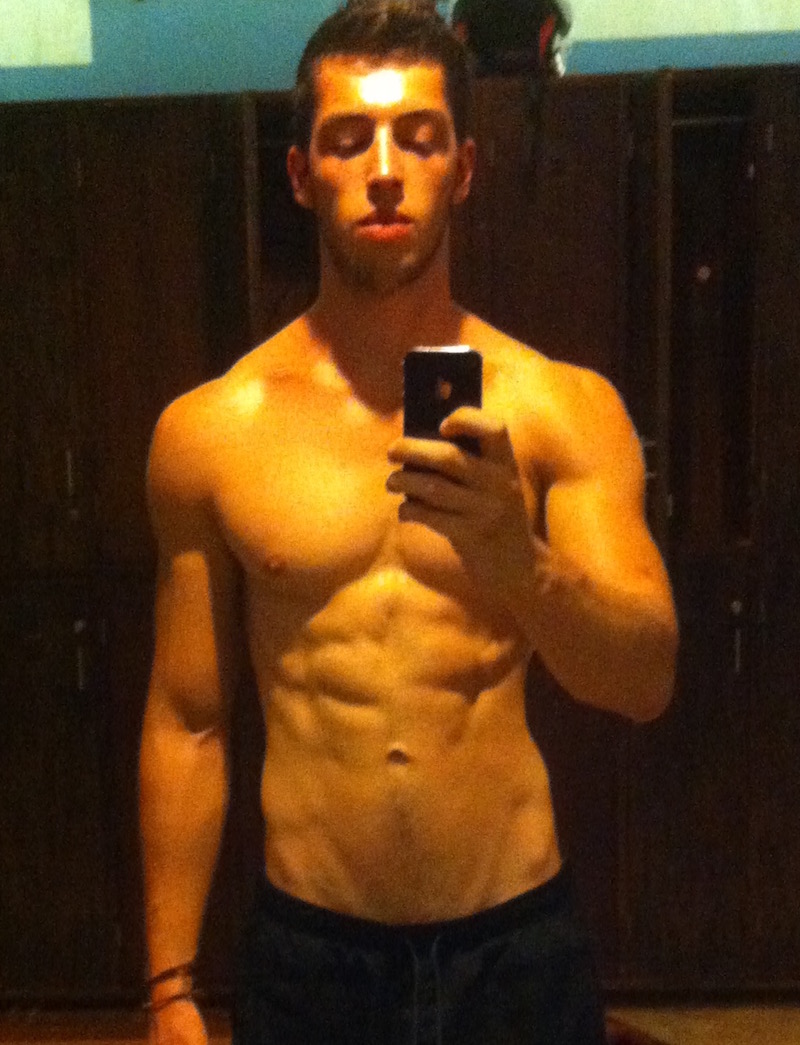
Before we get into the specifics though, it’s worth going over what I consider to be the best (most effective and most realistic) approach to fat loss.
There is so much misinformation out there – probably more on this topic than any other in existence. So before I explain the practical recommendations, it is worth explaining my ‘model’ for thinking about fat loss and getting lean in very plain terms.
The most effective and realistic way to approach & think about fat loss
(In my opinion)
There are many ways to lose fat – most involve altering diet and eating habits in some way – this can also be combined with exercise. You probably know this already.
This article is written under the assumption that you already lift weights or do some sort of exercise semi-regularly (2-3 times or more per week) OR you have an ‘average’ (skinny-fat) body type. This is NOT advice for extremely overweight and/or completely sedentary people.
It will also help if you have a basic understanding of macronutrients but that is not absolutely required.
So the majority of fat loss is going to come from changes in diet and eating habits. To get specific this is actually three things:
– The actual foods you are eating
– The frequency/schedule at which you eat them
– The amount/volume of food that you eat
Any and all dietary change means altering at least one of these three things.
So what is the best (fastest and most effective) way to lose fat for YOU?
That depends on two additional factors:
– How your individual body and physiology responds to changes in diet and eating habits
– Your level of self-discipline with regard to diet and eating habits (and also exercise/workout habits, to a lesser extent)
The first of these two things – how your body responds to different diet and eating habits – you can only really discover through trial and error. For example, some people can work out in a fasted state (and may even prefer it) where as this doesn’t suit others so well. You can only know by testing it out.
The second factor – your own level of self-discipline with regard to diet and eating habits – you probably have a decent idea of this already.
But it can help to think about these questions:
- How easy or difficult is it for you to add or remove certain foods from your diet? What about entire food groups?
- How easy or difficult is it for you to alter the amount of food that you eat on a consistent basis?
- How comfortable are you going about your day feeling a bit hungry?
- How well can you just ignore the feeling of hunger until it goes away?
Answering questions like these will help you understand your level of discipline/willpower in relation to food and eating.
As another example – it may be easier for person A to stop eating carbs completely rather than to eat the exact same foods but reduce the amount by 25%. For person B it could be the opposite – it really depends on the individual.
And again – you probably have a pretty good idea of how this applies to you already.
(You can also work on resetting your taste buds to make clean and healthy food taste good again – this will help A LOT if you want to improve your diet.)
To get lean understand these 3 things:
1. There are many methods to change your diet, eating habits and exercise that will get you lean (Many paths lead to the same destination)
2. Some methods are more effective and some less – this depends partly on your individual physiology – but usually effectiveness correlates with difficulty. More effective = more difficult = requires more discipline/discomfort on your part to achieve the desired result.
3. You can combine or “stack” these individual methods together. The more you stack, the more effective it will be – but this will also make it harder.
Hopefully that makes sense. I think this is the best way to think about and approach fat loss – rather than the idea that ONE single method will work best for everyone.
7 Ways to Lose Fat & Get Lean
(To use independently or to combine & stack)
The following is a list of the individual fat loss methods – again, the more you stack, generally, the more effective it will be. But at the same time, when you stack more it will get harder.
So taking into account both:
– What your body responds to best
– Your current level of self-discipline with regard to diet and eating habits
You can find a balance between effectiveness and difficulty to best fit your own specific situation.
Here is a brief rundown of each method along with some further resources to help you out.
1) Sleep enough
This is one may seem obvious, and we hear it all the time. But advice that’s repeated often is also often ignored.
The truth is that sleeping enough is EXTREMELY IMPORTANT if you want to lose fat.
If you do not sleep enough you are needlessly making it WAY more difficult for yourself to get lean.
There are specific physiological reasons for this, namely:
– Lack of sleep increases stress hormones (cortisol) which makes your body hold on to its energy (fat stores)
– Lack of sleep decreases your willpower, making it harder to follow a diet/eating plan
– Lack of sleep makes you hungrier and also makes it harder to feel full
– Lack of sleep slows down your metabolism
If you are not sleeping enough it will be 100X harder to get lean.
Lack of sleep will also mean you have lower energy in general, and will lower the quality and effectiveness of your workouts. Lack of sleep also makes you desire high-carb foods – the WORST foods to be eating if you want to lose fat.
If you have trouble maintaining a healthy sleep schedule these posts may be helpful:
– How to Fix Your Sleep Schedule
– How to Sleep Better Every Night
– How to Fall Asleep Fast in 5 Simple Steps
This is an easy fix and should be the #1 thing you implement if you currently don’t sleep enough – again any fat loss will be much harder without adequate sleep. There really no reason to needlessly handicap yourself here… so be sure to get enough sleep.
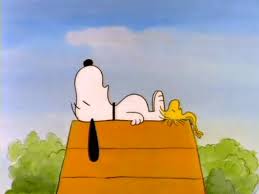
2) Intermittent Fasting
There is a lot of theory and science around the benefits of fasting for the body – along with this is the simple fact that intermittent fasting usually works for fat loss because you just end up eating less total calories.
It’s pretty hard to fit 10 or 12 hours worth of food into a 6 or 8 hour window, and once you get into the routine of fasting you actually feel less hungry.
IF is not complicated – it just means eating all your food inside a time window (usually 8 hours or less) and not eating the rest of the time.
Importantly – fasting means ZERO caloric intake. Some say trace amounts of calories (~10-40) is OK – I would recommend sticking with ZERO just to be 100% you do not break the fast.
ZERO calories means during the fasted period you cannot eat solid foods and you cannot drink liquids that contain calories – only water, black coffee or other zero-calorie beverages.
If you lift weight regularly you’ll have to figure out how this works best with your schedule – as some people like working out fasted and some don’t.
If you work out in the mornings and you are OK working out fasted, your IF schedule could look like this:
Fast from 8PM overnight to 12PM the next day
– 7AM – Wake up, work out in a fasted state
– 12PM – First meal of the day
– 3PM – Second meal
– 7PM – Third meal
– 8PM – Begin fasting for 16 hours
Many people who do IF only eat twice per day or even just once – you can do this as well.
Personally I prefer to eat a few hours before working out and I also like to work out in the late afternoon/early evening – so my schedule looks something like this:
Fast from 9-11PM overnight to 1-3PM the next day
– 8AM – wake up, continue fasting
– Eat around 1-2PM
– Work out around 4 or 5PM
– Eat post-workout
– Eat again around 8 or 9PM
Check out the LeanGains Guide for more detailed information on Intermittent Fasting – but again, no need to complicate things. Eat for 8 hours or less each day and don’t eat the rest of the time (no caloric intake at all) – that’s really it.

3) Fasted cardio
Fasted cardio means doing either low or high intensity cardio in a fasted state when you have not eaten for 12, 14 or 16+ hours. For our purposes we’ll say that any cardio done before your first meal of the day is ‘fasted cardio’.
Fasted cardio is a great method to stack with intermittent fasting, but can also just be done on its own before you eat breakfast in the morning.
Personally this is something that has always worked well for me to get lean. Fasted cardio is good for fat loss because:
– When you do fasted cardio, your body is using fat stores rather than glucose for energy. If you eat before doing cardio, your body will use the energy from the food you ate rather than fat.
– Your blood sugar levels are low/stable in a fasted state, and this aids in fat loss
This is very easy to implement if you already do cardio in the morning – just wait until after exercising to eat your breakfast.
Low intensity vs. high intensity cardio
Personally I have found that low intensity (usually incline walking) works just as well or better than high intensity cardio when fasted.
There is a lot of (tiresome) debate over high intensity vs. low intensity cardio… rather than sorting through all the different opinions my recommendations is just to try it and see for yourself.
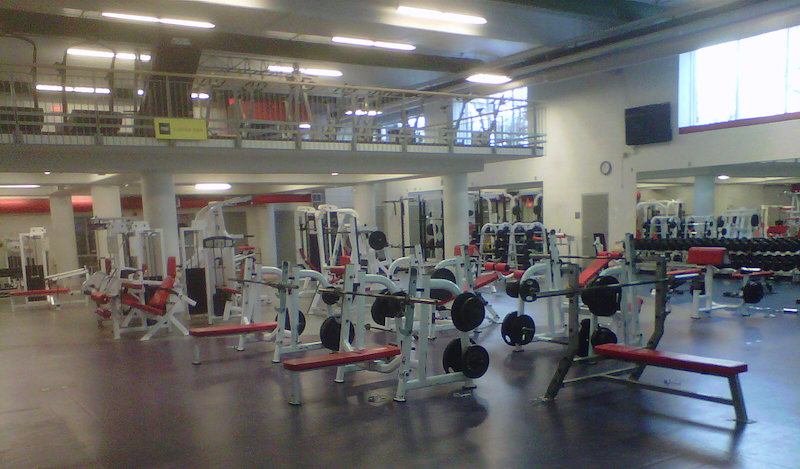
4) Reduce, Eliminate or Cycle Carbohydrate Intake
Carbs are a complex topic to go deep on and I am by no means an expert, but here are the basics:
– When we eat carbs, they are broken down in the body into sugar (glucose), which temporarily increases the amount of sugar in the blood. So consuming more carbs leads to higher and less stable blood sugar levels.
– As blood sugar levels rise, the pancreas responds by releasing insulin. Insulin is a hormone that moves sugar/glucose – as well as the other nutrients that are digested from food – from the blood into the muscles and fat cells for use or storage.
– If you minimize or eliminate carbohydrate intake, your blood sugar will stay low/stable and your insulin response will not spike as much or at all. The body will be storing less of what you consume as fat and will also be using FAT for energy.
Eat Less Carbs
Eating less carbs will help anyone to lose fat – however I think it can be especially useful for guys who already have a decent amount of muscle mass. This is because you likely already know your body quite well and you also understand the difference in feeling between being “carbed up” vs. carb depleted.
When your muscles are full of glucose they feel full and big, and when you’re carb depleted your muscles feel smaller and ‘flatter’.
For guys with muscle – stay around 60-70% ‘carbed up’
If you want to get lean, try to remain in a state of mild carb depletion pretty much all the time. It can be hard to find the right balance – but try to eat enough carbs to function normally and not feel bad without carbing up completely. I would say try to stay maybe ~65% carbed up to put a number on it.
If you know your body you can do this just by feeling – no need to count grams of carb or anything. If you stay in this somewhat carb-depleted state all the time you will lose fat quite quickly.

Eat No Carbs
Cutting carbs out of your diet completely is very effective for fat loss but it is also quite difficult, especially if you’re used to eating a lot of carbs. My recommendation to get here would be to gradually cut carbs over time, rather than trying to go cold turkey right away. Generally when you cut out carbs you will have less energy, you’ll feel tired, weak and irritable – just not very good.
If you are able to do it though and you cut out carbs 100% for a few weeks or even months – you will drop fat like a motherfucker.
No Carbs for a Long Time —> Ketosis
If you don’t eat carbs for long enough your body will enter a state of ketosis – where the body switches its “default” energy source from glucose (sugar/carbohydrates) to fat.
It usually takes at least a few weeks to used to being in a state of ketosis – a few weeks where you feel quite terrible. But after some time you stop feeling bad and by many accounts start to feel great. I have never done Keto for long periods though so I can’t comment from personal experience.
But I have dropped all carbs for shorter periods of time – again I would highly recommend gradually cutting carbs out of your diet rather than trying to go ‘cold turkey’ right away. This will lower the difficulty significantly.
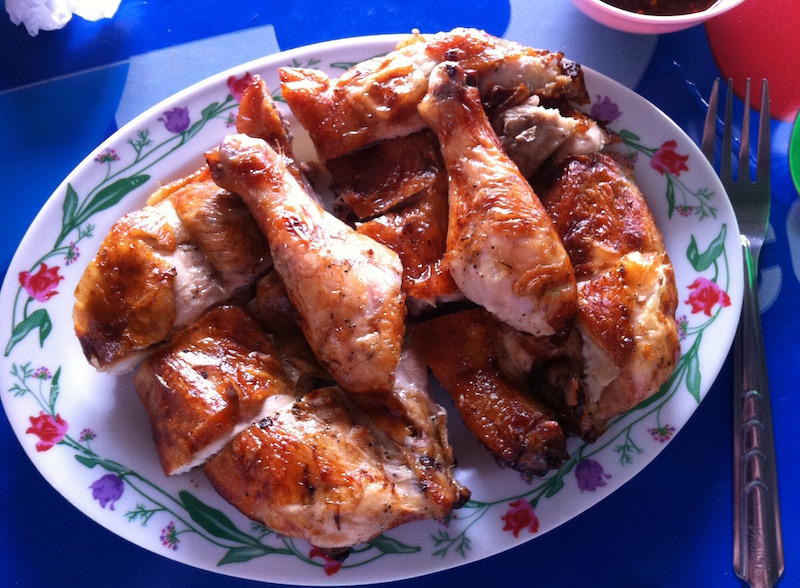
Cycle Carbs
Carb cycling is when you vary your carb intake over a period of days. Usually this is done with several days of low/no carb, followed by a “carb up” or “re-feed” day
So for example you could go 3 days with low/no carbs, then carb up on the 4th day – thus ‘cycling’ carbs over a 4 day period.
Carb cycling has been very effective for me personally, but I think it is best used when you are already somewhat lean (at least ~13% body fat/having somewhat visible abs is my non-expert opinion).
Carb cycling is still quite difficult – depending on how carb-heavy your current diet is – and if you go 3 or 4 days with very low/no carbs you will likely feel pretty shitty. Again – effectiveness correlates with difficulty.
5) Drink water before meals
This is very easy one to implement and it will help you lose fat for two reasons:
1) Often when people feel hungry they are actually just dehydrated. Even if dehydration is not 100% responsible for the feeling of hunger – it may still have something to do with it. So drink some water when you’re planning to eat a meal – and you may find you weren’t actually that hungry after all.
2) Drinking water makes you feel more full, so when you eat your meal you eat less food. This is a simple way to lower overall caloric intake.

6) Drink coffee
One effect of caffeine – and stimulants more generally – is that they function as an appetite suppressant. That means when you consume a stimulant, you will feel less hungry or not hungry at all for a certain period of time afterwards.
In understanding this, you can use it strategically to support any of the other methods listed above. Two great ways caffeine can help with fat loss are:
– Consume caffeine before fasted cardio and fasted workouts for more effective, higher intensity exercise
– Use caffeine to prolong fasted periods
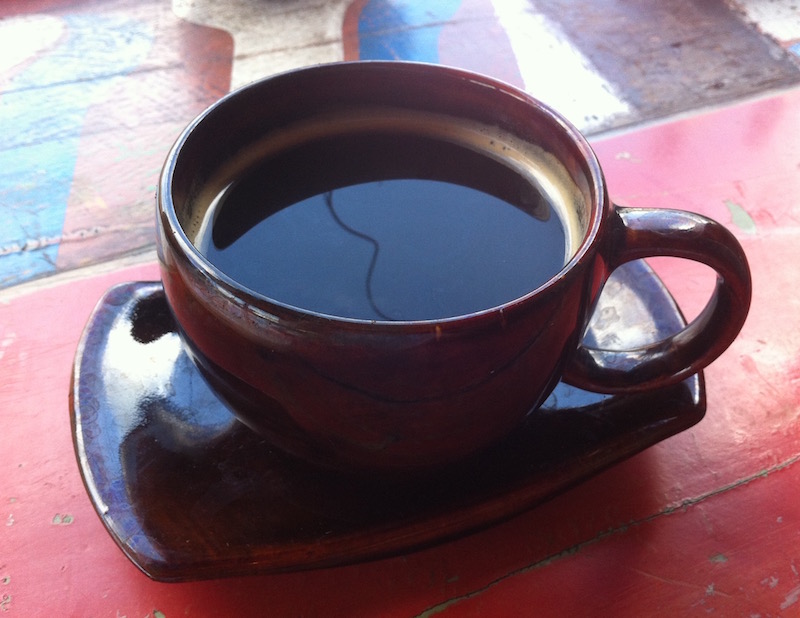
Like most things, caffeine is also more effective when consumed on an empty stomach. So what I like to do is drink black coffee in the morning during the fasted state. When I drink coffee on an empty stomach at around 8 or 9AM I usually won’t get hungry until 1, 2, or even 3pm.
7) Just eat less volume (Same foods – smaller amount)
Simply eat the same diet you are currently eating, but eat LESS of it. Cut your total intake back by some percentage (at least 10%) and you will notice some fat loss due to lower caloric intake.
If you do this gradually over time – your appetite will shrink along with your portions and you can increasingly eat less and less.
(Making gradual, incremental changes is actually a highly effective way to approach most areas of life)
Start small – for example if you usually eat two sandwiches, an apple and a protein bar for lunch – just remove half a sandwich and leave everything else the exact same. Do this for one meal for lower difficulty and lower effectiveness – do it for more meals for higher difficulty and greater effectiveness.
This is a good method if you are OK just feeling a bit hungry most of the time. If you haven’t experimented with this at all – try just waiting the hunger out and you may be surprised to find that after a while it just goes away.
So this might be easier in terms of willpower for some people compared to significantly altering the types of foods that you eat.
Alternatively it might be harder – but you have to try it and see.
Wrapping Up –
Hopefully this all made sense –
The aim here was to provide a solid overall perspective on fat loss and getting lean, as well as give you practical methods to lose fat faster and more effectively.
Please try this stuff out for yourself and leave any comments, questions or other thoughts you may have below, and I will do my best to answer.
Thanks for reading and good luck!
Read next: How to “80/20” Your Nutrition with 5 Simple Rules